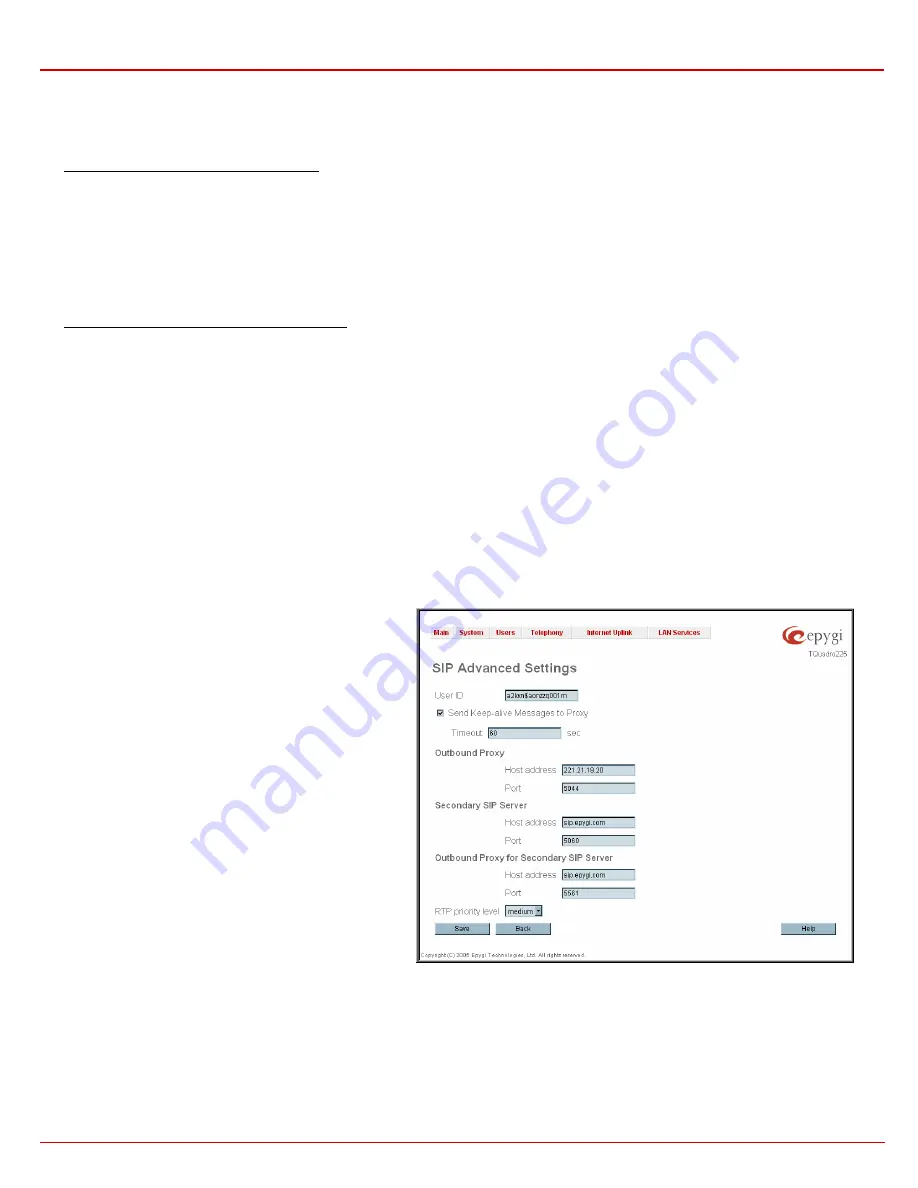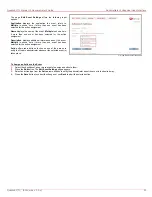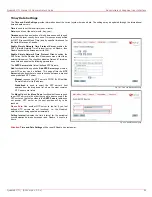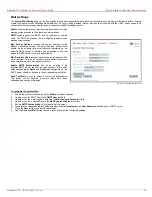
QuadroE1/T1 Manual II: Administrator's Guide
Administrator's Graphical User Interface
QuadroE1/T1; (SW Version 3.0.x)
37
1.
To remove an extension with all its settings select one or more checkboxes of the corresponding extensions that ought to be deleted from the
User Management table. Press Select all if all extensions ought to be deleted.
2.
Click on the Delete button on the User Management page.
3.
Confirm the deletion with Yes. The extension will be deleted. To abort the deletion and keep the extension in the list, click No.
To Add an Authorized phone to the database
1.
Enter the desired Auto Attendant Settings page.
2.
Select
Edit Authorized Phones Database to enter the Authorized Phones Database page.
3.
Press
the
Add button on the Authorized Phones Database page. The Add Entry page will appear in the browser window.
4.
Choose the call type and enter a caller address in the corresponding text field.
5.
Select
a
Login Extension and the Automatically Enter Call Relay Menu checkbox (if needed).
6.
Enable Call Back service if needed and define a Call Back Destination in the same named field.
7.
Fill in an optional Description in the appropriate field, if needed.
8.
Press
Save to submit the settings.
To Delete an Authorized phone from the database
1.
Enter the desired Auto Attendant Settings page.
2.
Select
Edit Authorized Phones Database to enter the Authorized Phones Database page.
3.
To remove an authorized phone(s), select one or more checkboxes of the corresponding records that ought to be deleted from the Authorized
Phones Database table. Press Select all if all records ought to be deleted.
4.
Press
the
Delete button on the Authorized Phones Database page.
5.
Confirm the deletion with Yes or cancel with No.
SIP Advanced Settings
The SIP Advanced Settings page is used to configure the Outbound Proxy, Secondary SIP Server and Outbound Proxy for the Secondary SIP
Server settings and to define other SIP server specific settings.
SIP Outbound proxy is such a SIP server, where all the SIP requests and other SIP messages are transferred. Some SIP servers use an outbound
proxy server to escape restrictions of NAT, e.g., Free World Dialup service uses an Outbound Proxy server. If an Outbound proxy is specified for an
extension, all SIP calls originating from that extension are made through that outbound proxy, i.e., all requests are sent to that outbound proxy, even
those call by Speed Calling.
The Secondary SIP Server acts as an alternative SIP registration server when the primary SIP Registration Server (defined from the SIP Registration
Settings page) is inaccessible. If the connection with the primary SIP server fails, Quadro will automatically start sending SIP messages to the
Secondary SIP Server, and will switch back to the primary SIP server, as soon as its connection is reestablished.
The SIP Advanced Settings page consists of the following
components:
UserID requires an identification parameter to reach the SIP
server. It should have been provided by the SIP service
provider and can be requested for some SIP servers only, for
others, the field should be left empty.
Send Keep-alive Messages to Proxy enables the SIP
registration server accessibility verification mechanism.
Timeout indicates the timeout between two attempts of SIP
registration server accessibility verification. If no reply is
received from the primary SIP server within this timeout, the
Secondary SIP server will be contacted. When the primary SIP
server recovers, SIP packets will be sent to it once again.
A group of Host address and Port text fields respectively
require the host address (IP address or the host name), the
port number of the Outbound Proxy, Secondary SIP Server
and the Outbound Proxy for the Secondary SIP Server.
These settings are provided by the SIP servers’ providers and
are used by Quadro to reach the selected SIP servers.
RTP Priority Level drop down list is used to select the priority
(low, medium or high) of RTP packets sent from corresponding
extension. RTP packets with higher priority will be preceded
first in case of heavy traffic.
Fig. III- 105 Extension Advanced SIP Settings page
H323 Advanced Settings
The H323 Advances Settings page is used for the H.323 gateway settings configuration to allow Quadro extension to use services provided by the
H.323 gateway. Depending on the H.323 gateway configuration, it can provide call routing services to the different type of networks (e.g. PSTN).
















































